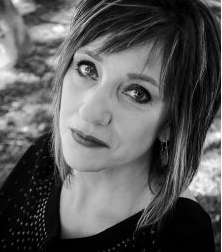3. Eight Top Publishing Lessons Authors Need To Know

Here is a concise summary of due diligence steps for the new author, posted by Digital Book World on July 5, 2017.
Guest Contributor Sharon Anderson is an award-winning author and Chief Reviews Editor for Chanticleer Reviews and International Book Awards. Creating and editing content – as well as editing/writing reviews – and outreach are just a few skills she brings to the table. An SPU graduate in Clothing Design and Textiles – something she barely uses in her day-to-day life – Sharon brings her textile know-how into her stories as often as possible. In her spare time, she serves as President of the Skagit Valley Writers League where she promotes authors, engages speakers, leads workshops, and more. She writes dark comedy, horror, short stories, articles, and essays whenever she gets the chance from her home in the Skagit Valley where she lives with her husband, two children, two dogs, a couple of cats, and a sketchy Guinea pig. Working with Chanticleer is like playing every day! Contact: editor@chantireviews.com.
Writing is not the same as publishing. That may seem obvious to most. But picture a young author with a lot to say – This person writes and writes, day after day. Amasses a seven-foot-tall stack of words on paper. This person then thinks everyone would love to read what they wrote.
Why not? They enjoyed writing it. They know it’s good. They send one of their stories off to a publishing house – maybe two. Okay, they send it off to five dozen.
And the answers come back: Not a chance in H. E. double hockey sticks!
Our author is crushed, heartbroken. Vows to never write again!
Quick show of hands – How many authors approach their writing careers in the same way?
Let’s back up a minute and examine what our aspiring author could have done to have a better chance at a different sort of answer. Here are the 8 top publishing tips authors need to know now:
1. You’ve spent hours writing your manuscript – now what?
After writing your manuscript for more hours than you can count, you’re not finished. Now it’s time to invest in a Manuscript Overview. What’s that? It’s a process whereby you send your work off to a trusted, experienced editor. They read your work and give you professional, genre-specific feedback: tell you what’s good, what needs work, if your manuscript is ready to publish. It can be painful – but it’s a necessary step on the road to publishing. A roadmap to make your work more successful in the marketplace. It’s to your advantage.
2. You’re tooling around on social media – time to get real.
At the same time as the Manuscript Overview is going on, begin strengthening your on-line presence through interactive social media. These days, even Fiction authors need a platform. Facebook is still a good way to do this, so is Instagram. Whatever you do, invite your community into a relationship. The thing to remember is publishers are looking for authors who already have a following that can be motivated to purchase books.
3. Overview done, now for some editing.
After you’ve incorporated the suggestions from your Manuscript Overview into your work, it’s time to send it off to a Copy Editor. What? Yes, you heard me. Take the extra time and send your work off to a professional, experienced editor who will examine your work and make sure you’ve hit all of the plot points, your characters are believable, your story is solid. Take the time. Do this step.
4. People do judge a book by its cover.
If you are indie-publishing or even hybrid publishing, you will need to consider your cover. You have 3 seconds – that’s THREE seconds to attract a potential buyer. If you have the chops to do this yourself, that’s awesome. But most authors don’t. Think about it. You have an awesome book. You’ve spent time and money making certain of it. Why wouldn’t you want to put as much time and attention in a cover that will work for you instead of against you? A good cover doesn’t have to cost thousands of dollars, but you do need to hire a professional cover designer who understands your genre.
5. Create your bios.
Every author needs a 100 word, a 200 word, and a 500 word biography to send to agents and publishers, to slap on your sell sheets, to place on the back of your book. Have these ready to go: three bio’s that will work for different applications. Get them done.
6. Say cheese! Get a professional author photo.
What’s needed is a high-res, professional photo to place on your book, stick on your business cards, add to your sell sheets… get the picture?
7. Editing’s not done yet: line editing
Do yourself – and everyone else a favor and hire a line editor to catch those pesky grammar mistakes everyone makes. Take care of it. Get it done.
8. Advance reviews.
Before you hit the publish button, send your work off for a professional, unbiased review. This will help set the tone for subsequent reviews, give you an opportunity to smack a blurb onto your awesome cover, and help expand your audience.
Honestly, there are even more things an author can do to ensure publishing success. Enter a writing contest, go to book events, arrange a signing, engage an agent – talk to people. It may be overwhelming, but when you meet the right people, it can be life – and career – changing.
